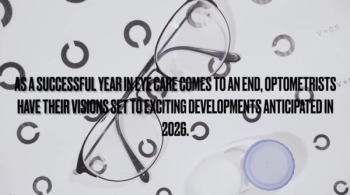
Functional testing plays central role in care of glaucoma patients
Visual field testing can be frustrating for patients, but it should remain a core component of patient care because it provides essential information about glaucoma progression.
Key Points
Salt Lake City-Visual field testing (VFT) can be frustrating for patients, but it should remain a core component of patient care because it provides essential information about glaucoma progression, said Michael Chaglasian, OD, at Optometry's Meeting.
"As a bottom line," he continued, "identifying progression in glaucoma is difficult, and no single modality of evaluation should be used in isolation. Monitoring requires a combination of visual fields, structural analysis, and clinical and photographic assessment. Clinicians should become comfortable with all of these tools and know the strengths and limitations of the systems they are using in order to optimize individual patient care."
Currently, standard automated perimetry-white-on-white-remains the gold standard for VFT in glaucoma. Dr. Chaglasian recommended using threshold algorithms, noting he most frequently uses the 24-2 SITA-standard program (Humphrey Field Analyzer [HFA], Carl Zeiss Meditec). Programs with a similar test pattern and number of stimulus locations are available on instruments from other manufacturers.
In evaluating serial visual fields, clinicians must recognize that in eyes with early glaucomatous functional loss, fluctuation in the location of defects is not uncommon. Data on the repeatability of visual function testing from the large, randomized, controlled OHTS showed that 86% of abnormal and reliable fields were not confirmed on retesting.
Other data from OHTS showed that a visual field abnormality confirmed by three consecutive, reliable results offered greater specificity. Yet, some eyes with three abnormal tests still had a normal test on subsequent follow-up.
"This reminds us of the need to carefully evaluate any field abnormality and to be cautious about making a diagnosis just based on a single visual field for a patient," Dr. Chaglasian told Optometry Times.
Newsletter
Want more insights like this? Subscribe to Optometry Times and get clinical pearls and practice tips delivered straight to your inbox.













































.png)


